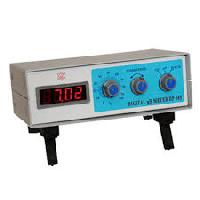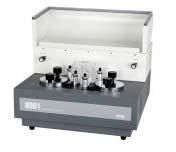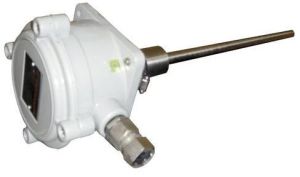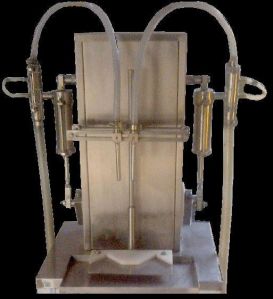
Analytical Instruments
1 Per Piece
10 Piece (MOQ)
In the scientific and industrial world, understanding the composition and properties of materials is fundamental. Analytical instruments act as our eyes and ears into the unseen world, providing crucial insights into the chemical makeup, physical characteristics, and structure of various substances. Here's a breakdown of what analytical instruments are and the key roles they play: Function: · Analytical instruments encompass a diverse range of tools used to analyze the chemical and physical properties of materials. · They can be used for qualitative analysis (identifying the components of a sample) or quantitative analysis (determining the amount of each component present). · These instruments play a vital role in various fields like: o Chemistry o Biology o Physics o Environmental Science o Materials Science o Forensics o Pharmaceutical Manufacturing o Food and Beverage Production Types of Analytical Instruments: The vast array of analytical instruments can be categorized based on the analytical technique they employ: · Spectroscopic Techniques: These instruments analyze the interaction of light or radiation with a sample. Common examples include: o Mass Spectrometry (MS): Identifies and quantifies molecules based on their mass-to-charge ratio. o Atomic Absorption Spectroscopy (AAS): Measures the concentration of specific elements by analyzing the light absorbed by the sample. o Ultraviolet-Visible (UV-Vis) Spectroscopy: Analyzes the absorption of ultraviolet and visible light by a sample to determine its composition. · Chromatographic Techniques: These techniques separate the components of a mixture based on their interaction with a stationary phase. Common examples include: o High-Performance Liquid Chromatography (HPLC): Separates and analyzes complex mixtures of liquids. o Gas Chromatography (GC): Separates and analyzes volatile compounds. · Electrochemical Techniques: These techniques involve measuring the electrical properties of a sample. Examples include: o pH Meters: Measure the acidity or alkalinity of a solution. o Conductivity Meters: Measure the ability of a solution to conduct electricity. · Microscopic Techniques: These instruments provide magnified images of a sample for detailed analysis. Examples include: o Optical Microscopes: Provide high-resolution images of a sample's surface features. o Electron Microscopes: Offer much higher magnification than optical microscopes, allowing visualization of structures at the atomic level. Benefits of Using Analytical Instruments: · Improved Quality Control: Allow manufacturers to ensure their products meet specific quality standards. · Environmental Monitoring: Help monitor air, water, and soil quality for contaminants. · Medical Diagnosis: Assist doctors in diagnosing diseases by analyzing blood, tissue, and other biological samples. · Material Characterization: Enable scientists and engineers to understand the properties of new materials. · Forensic Investigations: Provide valuable evidence for criminal investigations. · Advancement of Scientific Research: Play a critical role in scientific discoveries and innovations. Choosing the Right Instrument: Selecting the appropriate analytical instrument depends on various factors: · The type of sample being analyzed: Solid, liquid, or gas? · The specific information desired: Composition, structure, or physical properties? · The desired level of accuracy and sensitivity. · Cost and budgetary limitations. The Future of Analytical Instruments: The field of analytical instrumentation is constantly evolving. Here are some trends to watch for: · Miniaturization: Development of smaller, portable instruments for on-site analysis. · Increased Automation: Instruments with greater automation capabilities for faster and more efficient analysis. · Improved Sensitivity: Ability to detect even smaller quantities of analytes. · Integration with Artificial Intelligence: Utilizing AI for data analysis and interpretation. Conclusion: Analytical instruments are the unsung heroes of science and industry, providing us with the power to unlock the secrets hidden within materials. By understanding their diverse functionalities and the ever-evolving landscape, we can leverage these tools to advance research, ensure quality, and solve problems across various fields.

total organic carbon analyzer
Get Price Quote
UNIQUE, PATENTED TWO ZONE FURNACE DESIGN Having two temperature zones assure complete combustion of carbon and nitrogen containing compounds while saving the catalyst life.This is based on the unique patented two-zone furnace design Reactor design eliminates direct physical contact of the catalyst with the sample, reducing sulfur and halogen poisoning, thereby increasing catalystservice life. High temperature catalytic oxidation (HTCO) technology and the in-house developed catalyst allow simultaneous measurement of TC and TNb parameters. The same catalyst serves for combustion of compounds containing carbon and nitrogen.
Best Deals from Analytical Instruments

Systech Illinois Oxygen Permeation Analyzer
Get Price Quote
As a renowned Supplier we proudly offer Systech Illinois Oxygen Permeation Analyzer. We undergo a thorough process of vendor selection. It makes sure that we only procure from the vendors who deny to compromise with quality. It is equipped with various features like high performance, compact design and smooth functionality. It can be delivered at your doorstep owing to our entrenched distribution network.Description : Modular systems for precision oxygen analysis of packaging film barriers. The 8001 is a versatile and easy to operate oxygen permeation analyzer with 2 stations for testing films or packages. Offering the highest quality coulometric oxygen sensor in the market with the lowest replacement cost, this instrument provides extremely fast purge down times and accurate readings at the lowest levels. With widest measurement range in the market, this analyzer can be used for research and development permeation testing and has the speed required for use in Quality Control testing. The 8001 oxygen permeation analyzer offers precision temperature, humidity and flow control providing consistent and repeatable test conditions. With a wide sample temperature range and a controllable Relative Humidity range, this oxygen permeability tester is able to provide the fastest changeover from wet to dry sample runs. Expansion modules are available for up to twelve simultaneous oxygen permeation measurements to increase testing throughput. Features and Benefits : Analytical Systems Manufactured Traceable to NIST System validation with certified gas or film for speed and convenience Wide measurement range providing research grade flexibility Flow, temperature and humidity control for ultimate responsiveness and repeatability Coulometric oxygen sensor enhances analytical precision Intuitive Windows based software Fast permeation results No liquid coolants, catalysts or special gas mixtures required For medical and pharmaceutical permeation testing, we can offer software which conforms to 21CFR Part11. Applications : Barrier films PET bottles Containers Canisters Flexible pouches Bags

broken bag detector
Get Price Quote

liquid analyzers
Get Price Quote
The Semi-Automatic Table Top Volumetric Liquid Filling System consists of main structure, product holding mechanism, nozzles & syringes, electrical panel, motor & mains ONOFF.

hydrogen gas analyzer
Get Price Quote
hydrogen gas analyzer

analytical laboratory instruments
Get Price Quote
analytical laboratory instruments, hydro meteorological instruments

pH Meter
Get Price Quote
Lab Chemical, lab instruments

Analytical Instrument
Get Price Quote
Analytical Instrument, hydro meteorological instruments

Oxygen Analyzer
Get Price Quote